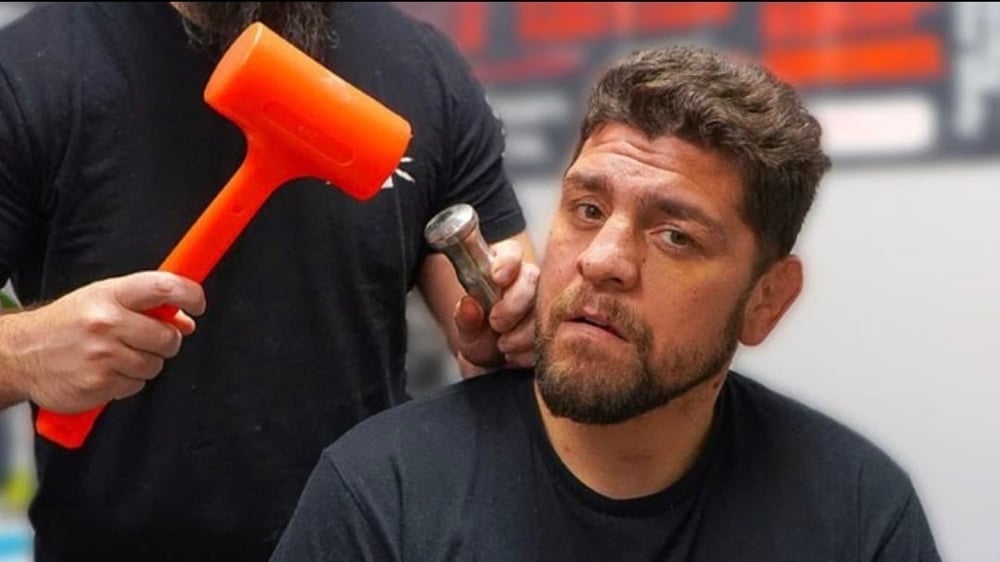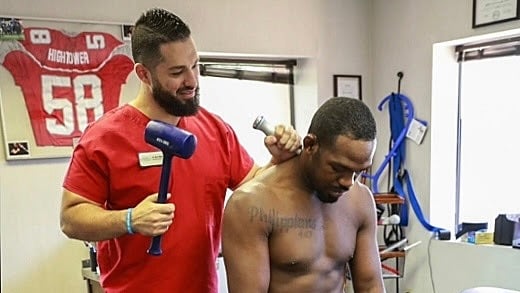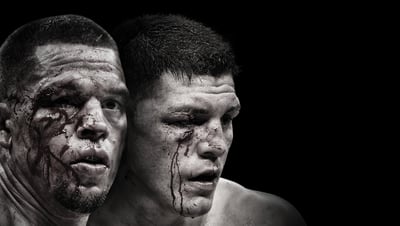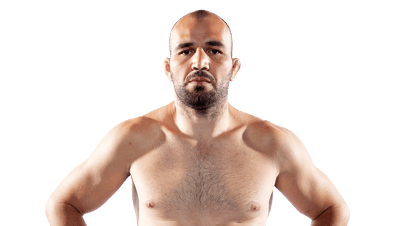
Issue 216
April 2025
Find out why Dr. Beau Hightower is the therapist MMA’s elite call when pain throws the first punch.
You may not know him, but you know his work. Dr. Hightower has been at the forefront of MMA’s best-performing athletes for decades. Based in Albuquerque, New Mexico, at the world-renowned Jackson Wink, where a stable of elite fighters has included the likes of Donald Cerrone, Diego Sanchez, Holly Holm, and Jon Jones. Several of these athletes have been at the business end of his adjustment tools. Dr. HighTower relieves the aches, pains, and sprains that might stifle octagon-specific greatness. Fighters Only’s Adam Newby caught up with him to understand what makes MMA bodies different.
How did you get into your chosen line of work?
I have always had a keen interest in science, which is what led me to study biology as an undergraduate. After completing my biology program, I considered my next steps, exploring various healthcare professions. The only options that made sense to me were optometry and chiropractic, as I'd spent a lot of time with them while growing up. Quite frankly, chiropractic seemed like a much more rewarding career; my chiropractor in the past worked good hours, played golf, made a good salary, and got to hang out with a bunch of athletes, which is what I wanted to do.
How did you begin working at the world-renowned Jackson Wink facility?
I began working with athletes in Texas, which led me to work with Team Takedown. This experience then led me to work alongside some great athletes, including Johnny Hendricks, as he made his way toward the title. He was the first UFC Champion that I had ever worked with. Then, when I moved back to New Mexico and, given my history of working with several high-level athletes, including those from the UFC, it was a smooth transition to working with UFC athletes there, such as Tim Kennedy, Andrei Arlovski, Alistair Overeem, eventually leading to treating Mike Winkeljohn and Greg Jackson. They began forwarding their stable of fighters to us, and I started working with them. Upon opening the new Jackson Wink facility, we were invited to relocate there. We were offered the position of in-house physiotherapy and chiropody team for Jackson Wink MMA. We have now worked with nineteen UFC champions, as well as champions from Bellator and K-1.

How did you build yourself to such a high level within your work?
When it comes to building a successful clientele list, a lot of it is just being in the right place at the right time. Being in Albuquerque during the dawn of the MMA boom was very helpful. We had so many big-name fighters that were training out of here that I was able to work with early and often even being a part of their training regime, including BJ Penn, Matt Hughs, Nick Diaz, Carlos Condit, Anthony Pettis, Michelle Waterson, Keith Jardine, but to name a few. Luckily, I was publishing content when YouTube began recommending chiropractic videos, and I was able to make the most of both educational content and appealing to combat sport fans with the help of my clients. This led to rapid growth in both my Instagram account and YouTube channel, which in turn enabled me to connect with and collaborate with other athletes, musicians, and actors.
Who among all your clients has been the most interesting?
One of my most interesting clients is undoubtedly Diego Sanchez, also known as The Nightmare. He was one of the first UFC fighters I traveled with regularly, and I credit him for opening the door to meeting Coach Jackson and Winkeljohn as well. We go so far back that I would do anything for that guy. Everybody knows that he is eccentric, but many people don’t realize the depth of his heart and the extent of his care for his friends, family, and community.

What is the most frequently occurring injury pattern in the MMA elite?
The two most common injuries that tend to knock elite fighters out of fights are acute lower back injuries and shoulder injuries. The best way to prevent these injuries is to maintain strength within those muscle groups. For the lower back, we consistently incorporate several strengthening exercises in the gym, such as Jefferson curls and reverse hyperextensions, typically split into three to four sessions throughout the week. The lower back deflectors can become overactive, so strengthening these muscles, including the glutes, is crucial for maintaining lower back health. For the shoulders, we recommend using dynamic rotator cuff strengthening exercises, as well as cable exercises that target the rotator cuff. There is significant anterior motion that occurs during throwing punches and similar movements, which can cause the posterior muscles in the shoulder to weaken and potentially tear, leading to dislocation. Arriving at the gym early to ensure a good warm-up before training is also imperative.
Are there warning signs when a fighter is about to break down physically?
Minor injuries often precede the early warning signs of more serious injuries. Typically, small amounts of tissue damage can lead to more significant tissue damage in the future. Minor sprains in the hamstrings can lead to large sprains in the hamstrings, and minor sprains of the MCL (Medical Collateral Ligament) can lead to complete ruptures of the MCL and the same with the rotator cuffs, so one of the most challenging things to do is to get fighters to rest when they need to. Fighters often dislike sleeping, as they fear they may be falling behind their opponent's actions. We always tell athletes that if you can't be strong and healthy before the fight, what are the chances of matching your opponent's skill during the fight? Being 100% during any fight is a complete fallacy. There's not one athlete who steps inside the Octagon, for example, who enters 100% due to the grueling preparation of their training and diet, as it's simply too much for the body to handle without compromising health. There are exceptions to the rule; for example, a younger athlete is likely to recover from any form of vigorous regime more quickly than an older athlete. We observed that during the Testosterone Replacement Therapy (TRT) era, athletes appeared to recover more effectively. Still, since the reimplementation of USADA (United States Anti-Doping Agency) and the drug testing in the UFC pool, the injury rates have unfortunately increased among competitive athletes.

How does fight style impact fighter's required treatment?
A fighter who throws a lot of kicks often needs to spend more time warming up and stretching their hamstrings by using rolling techniques to keep their posterior chain loose. In contrast, a grappler may want to stay tighter and not be as flexible, particularly those of the Daghestani wrestling type, who often expend a lot of energy and tension. Jiu-Jitsu, of course, is a much less physically intensive grappling style, where grapplers hold certain positions for a certain period and then move quickly, as opposed to continually pushing into someone, as is done in wrestling, whether it's American-style or Daghestani-style. As we know, wrestling is more physically demanding than jiu-jitsu due to the high energy required for it. Often, a fighter's athletic history can predict the type of fighter they will be in the UFC, which also provides insight into the types of injuries that are likely to occur. Whether they have come from a wrestling or boxing background to Muay Thai fighting or just a general martial arts background may affect the habits they have in terms of stretching, rolling, or strength conditioning. We found that wrestlers have often been accepted into college programs that value strength and conditioning. In contrast, BJJ practitioners or Muay Thai practitioners may have worked within a small dojo and learned yoga techniques or shin conditioning from their masters.
What mobility techniques do you believe every athlete should use?
Most of the fighters utilize band work, so we have resistance bands tied up to all the cages to ensure that fighters who take their health seriously will do shoulder strengthening and warm up their shoulders. We also have foam rollers, PVC pipes, and massage dens throughout the gym so that fighters who have been rolling for a while can, in return, use PVC pipes to roll out their legs, lats, and arm muscles, loosening the tissue and decreasing pain. Utilizing the PVC pipe is very similar to shin conditioning, as it can reduce the pain sensitivity of the legs and arms, which helps them deal with pain when taking strikes. Fighters also regularly use pull plunger exercises and massage therapy, which appear to be quite effective.

Which part of the body do fighters tend to neglect?
The lower back, shoulders, and neck. I think that fighters neglect their neck the least because they understand that there is a connection between neck strength, stability, and getting knocked out, so they tend to do a good job in strengthening their neck muscles, whether that be through isometric exercises, bridges or using exercises that involved the iron neck harness. The best way to avoid injuries is to minimize those that damage tissues. This can be achieved by having a trainer or someone who has helped you evaluate your training program to ensure that you aren’t performing exercises with poor form. After that, it's essential to monitor your mobility throughout the body, but the most important thing is to ensure that the muscles that stabilize your joints stay strong. There are several ways to achieve this. You don’t necessarily have to lift weights. You can use resistance bands to strengthen the glutes, back, neck, and rotator cuffs. Additionally, warming up and stretching are essential.










